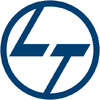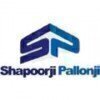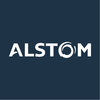Filter interviews by
Megha Engineering & Infrastructures Piping Engineer Interview Questions, Process, and Tips
Megha Engineering & Infrastructures Piping Engineer Interview Experiences
2 interviews found
I applied via Referral and was interviewed in Feb 2024. There were 2 interview rounds.
(2 Questions)
- Q1. What is piping?
- Ans.
Piping refers to a system of pipes used to transport fluids or gases from one location to another.
Piping is used in various industries such as oil and gas, chemical, pharmaceutical, and construction.
It involves the design, fabrication, installation, and maintenance of pipes.
Pipes can be made of materials like steel, copper, PVC, or HDPE.
Piping systems can include fittings, valves, and other components to control the fl...
- Q2. What are the types of pipes used in piping?
- Ans.
Types of pipes used in piping include steel, copper, PVC, and HDPE.
Steel pipes: commonly used for high-pressure applications
Copper pipes: used for water supply lines
PVC pipes: lightweight and easy to install, commonly used for drainage systems
HDPE pipes: high-density polyethylene pipes used for underground gas and water lines
(1 Question)
- Q1. What is bevel angle of piping?
- Ans.
Bevel angle of piping refers to the angle formed between the prepared edge of the pipe and a plane perpendicular to the pipe axis.
Bevel angle is typically specified in degrees, such as 30° or 45°.
It is important for welding processes to ensure proper fit-up and joint strength.
Different bevel angles may be required based on the material being used and the welding procedure being employed.
Interview Preparation Tips
I applied via Company Website and was interviewed in Aug 2023. There was 1 interview round.
(6 Questions)
- Q1. All related Piping and my experience related questions ASME standards codes
- Q2. What's Pinging, pipeline ASME CODE
- Ans.
Pinging in pipeline ASME CODE refers to the process of using ultrasonic testing to detect defects or anomalies in the pipeline.
Pinging involves sending ultrasonic waves through the pipeline to detect any abnormalities in the material or welds.
This technique is commonly used in the inspection of pipelines to ensure they meet the standards set by the ASME CODE.
Pinging helps identify potential issues such as cracks, corro...
- Q3. What's the use of corrosion coupon and it's applications
- Ans.
Corrosion coupons are used to monitor the rate of corrosion in a system and to determine the effectiveness of corrosion inhibitors.
Corrosion coupons are small metal strips or discs that are inserted into a system to measure the rate of corrosion over time.
They are made of the same material as the system being monitored, allowing for accurate assessment of corrosion rates.
Corrosion coupons are typically retrieved period...
- Q4. P&ID and PFD difference and full form
- Ans.
P&ID stands for Piping and Instrumentation Diagram, while PFD stands for Process Flow Diagram. They are both used in engineering to represent processes and systems.
P&ID shows the piping of the process flow system, including the equipment and instrumentation used.
PFD shows the overall flow of the process, including major equipment and control loops.
P&ID includes more detailed information like pipe sizes, materials, and ...
- Q5. CAD related test on basis isometric drafting and ON PIPING GAD also
- Q6. Types of instruments and application
- Ans.
Types of instruments used in piping engineering and their applications
Pressure gauges - measure pressure in pipes to ensure safe operation
Flow meters - measure the flow rate of fluids in pipes for monitoring purposes
Temperature sensors - monitor the temperature of fluids in pipes to prevent overheating
Level indicators - indicate the level of fluids in tanks connected to pipes for control purposes
Control valves - regula...
Interview Preparation Tips
Skills evaluated in this interview
Top trending discussions






Interview questions from similar companies

Senior Engineer Interview Questions & Answers
Larsen & Toubro Limitedposted on 18 Nov 2020
Interview Questionnaire
3 Questions
- Q1. What is android architecture stack?
- Q2. What is AIDL?
- Ans.
AIDL stands for Android Interface Definition Language, used for inter-process communication in Android.
AIDL is used to define the interface between client and service in Android.
It allows communication between different processes in Android.
AIDL is used to pass complex data types between processes.
AIDL is similar to Remote Procedure Call (RPC) in other programming languages.
Example: AIDL is used in Android to implement...
- Q3. What is hash set and hash map
- Ans.
Hash set and hash map are data structures used to store key-value pairs for efficient retrieval.
Hash set stores unique values without any specific order.
Hash map stores key-value pairs and allows fast retrieval of values based on keys.
Both use hashing to map keys to their corresponding values.
In Java, HashSet and HashMap are implementations of these data structures.
Skills evaluated in this interview

Senior Engineer Interview Questions & Answers
Larsen & Toubro Limitedposted on 10 Sep 2015
I applied via PLACEMENT
Interview Preparation Tips
Experience: Good detailed interview in terms of technical knowledge
Tips: Should be thorough with the projects you have done during the course
General Tips: be confident of what you put in your resume
Technical knowledge regarding projects undertaken during engineering should be sound
Be confident
Skills: Communication, Thinking capability, knowledge applying capability
College Name: V.E.S Institute Of Technology
Motivation: Opportunity to work in a renowned and core technical company
Funny Moments: We consider the interview panelists to be as tough as our viva externals. Interviewers are mostly on your side(contrary to viva professors :P)

Senior Engineer Interview Questions & Answers
Larsen & Toubro Limitedposted on 10 Sep 2017
I appeared for an interview before Sep 2016.
Interview Questionnaire
1 Question
- Q1. Ocampo, basic electronics and C
Interview Preparation Tips
Duration: 1 hour
Total Questions: 50
Skills: Embedded Systems, C Programming
College Name: Sahyadri college of engineering

Senior Engineer Interview Questions & Answers
Larsen & Toubro Limitedposted on 12 May 2018
Interview Questionnaire
5 Questions
- Q1. Pertaining to the mentioned roles and responsibilities in your resume
- Q2. Planning and work order creation
- Q3. Piling activities
- Q4. Introduction
- Q5. Cross checking of documents
Interview Preparation Tips
Experience: On the criteria that I scored atleast 60% overall and had no gap between job/s.

I applied via Recruitment Consultant and was interviewed in Sep 2019. There were 3 interview rounds.
Interview Questionnaire
2 Questions
- Q1. Question about material reconciliation, allowable wastage question based on previous work experience
- Q2. It's not easy to describe it in a few words because of the interview time is more
Interview Preparation Tips

Interview Questionnaire
1 Question
- Q1. Hard core techanical

Interview Preparation Tips

I applied via Referral and was interviewed before Jan 2021. There were 5 interview rounds.
Interview Questionnaire
4 Questions
- Q1. What do you want to do in 5 years
- Q2. What is glass
- Ans.
Glass is a solid, transparent material made by heating a mixture of silica and other materials.
Glass is a non-crystalline, amorphous solid
It is made by heating a mixture of silica, soda ash, and lime
It can be molded into various shapes and sizes
It is used in windows, mirrors, lenses, and containers
Different types of glass include tempered, laminated, and stained glass
- Q3. What is graphene
- Ans.
Graphene is a thin layer of pure carbon arranged in a hexagonal lattice.
It is the thinnest material known to man
It is a good conductor of electricity and heat
It is incredibly strong and flexible
It has potential applications in electronics, energy, and medicine
- Q4. What is your expectations
Interview Preparation Tips
Megha Engineering & Infrastructures Interview FAQs
Tell us how to improve this page.
Megha Engineering & Infrastructures Interviews By Designations
- Megha Engineering & Infrastructures Senior Engineer Interview Questions
- Megha Engineering & Infrastructures Civil Site Engineer Interview Questions
- Megha Engineering & Infrastructures Civil Engineer Interview Questions
- Megha Engineering & Infrastructures QA QC Engineer Interview Questions
- Megha Engineering & Infrastructures Store Executive Interview Questions
- Megha Engineering & Infrastructures Senior Civil Engineer Interview Questions
- Megha Engineering & Infrastructures Graduate Engineer Trainee (Get) Interview Questions
- Megha Engineering & Infrastructures Engineer Interview Questions
- Show more
Interview Questions for Popular Designations
- Piping Designer Interview Questions
- Senior Piping Engineer Interview Questions
- Piping Design Engineer Interview Questions
- Piping Supervisor Interview Questions
- Piping Stress Engineer Interview Questions
- Junior Piping Engineer Interview Questions
- Piping Foreman Interview Questions
- Pipeline Engineer Interview Questions
- Show more
Megha Engineering & Infrastructures Piping Engineer Interview Process
based on 3 interviews
Interview experience
Interview Questions from Similar Companies
Fast track your campus placements

Megha Engineering & Infrastructures Piping Engineer Reviews and Ratings
based on 3 reviews
Rating in categories
|
Engineer
897
salaries
| ₹2.2 L/yr - ₹7 L/yr |
|
Senior Engineer
842
salaries
| ₹3.2 L/yr - ₹9.6 L/yr |
|
Associate Manager
509
salaries
| ₹4.4 L/yr - ₹16 L/yr |
|
Mechanical Engineer
387
salaries
| ₹2.1 L/yr - ₹7.3 L/yr |
|
Civil Engineer
344
salaries
| ₹2.2 L/yr - ₹7.6 L/yr |

Larsen & Toubro Limited

Shapoorji Pallonji Group

Alstom Transportation

Tata Technologies
- Home >
- Interviews >
- Megha Engineering & Infrastructures Interview Questions >
- Megha Engineering & Infrastructures Piping Engineer Interview Questions













